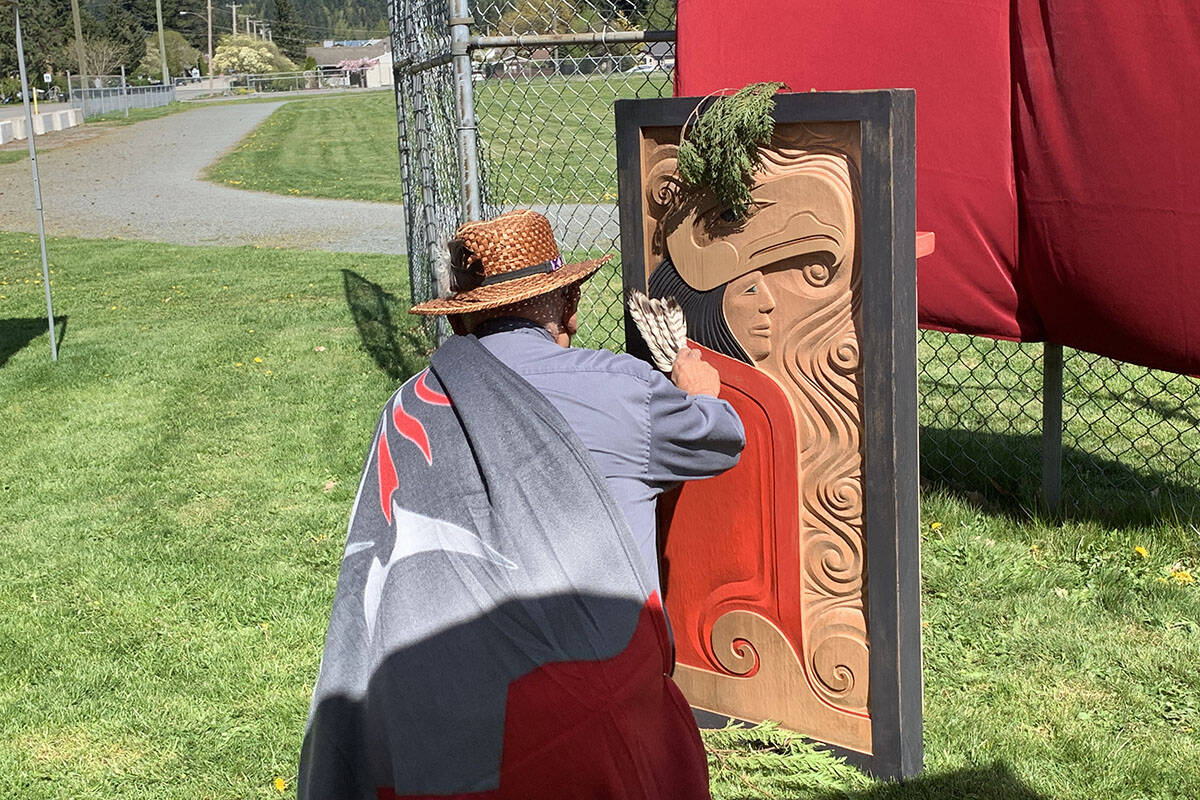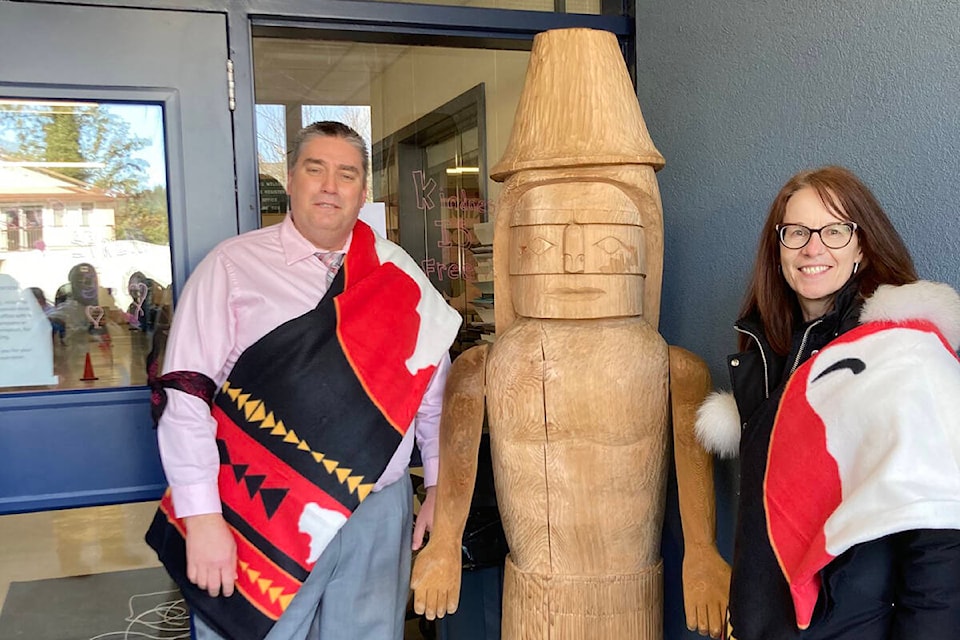The Fraser Cascade school district has pressed the District of Hope to join them in honouring Halq’emeylem, the Indigenous language of this region.
Superintendent Balan Moorthy and the school district’s Indigenous education principal Christine Seymour addressed council at the June 27 meeting, and outlined some of the truth and reconciliation work the district has been doing over the past years.
They talked about the district’s Orange Shirt Day participation, welcoming posts being added to schools, art being created to honour Indigenous history, as well as working on incorporating the Halq’emeylem language into different aspects of both education and the business of running the district. For example, they worked with local Indigenous artist Bonny Graham to create a new logo for the school.
Much of the work they’ve done toward reconciliation has been throughout the pandemic, they added.
“We went through, of course, the atmospheric river, the flooding, the road closures,” Moorthy said, speaking to their commitment to reconciliation. “We continue to be on this anti-racism journey.”
There is now a “rich culture of indigeniety and culture in all our schools,” he said.
He said that their “challenge” to the council and the District of Hope is to look at representation more deeply.
“I haven’t seen any welcoming posts,” he said in chambers. “I haven’t seen any celebration of the language, so that’s my challenge [to you].”
He noted that when he visits other communities, including Nanaimo, “I can feel it.”
Seymour, who is the daughter of Steven and Gwen Point, underlined the importance of making the effort to acknowledge local First Nation history and culture, as other cultures such as logging and colonialism are honoured locally.
She has been teaching language for about 20 years, and spoke about how Halq’emeylem is dying like so many other Indigenous languages. Honouring the language is one way to help keep it alive.
“Truth and reconciliation, it’s been spoken about since 2015,” she said. “I think we’re trying to figure out what it looks like. I do think there is incredible potential.”
Mayor Peter Robb said that they have been having discussions about a house pole at the municipal office, and that they’ve also been working with Graham in creating new signage that incorporates Halqu’meylem.
Graham has worked on countless projects to incorporate Halqu’emeylem into society through her unique designs and artwork that combine language and images.
“There will be dual languages on all our future signage,” Robb noted. “There is future stuff coming.”
Recently, the District of Hope started to read a land acknowledgement at the beginning of public meetings.
READ MORE: SD78 reaches out through new Indigenous Friendship Centre
@CHWKcommunity
jessica.peters@abbynews.com
Like us on Facebook and follow us on Twitter.
Want to support local journalism during the pandemic? Make a donation here.

